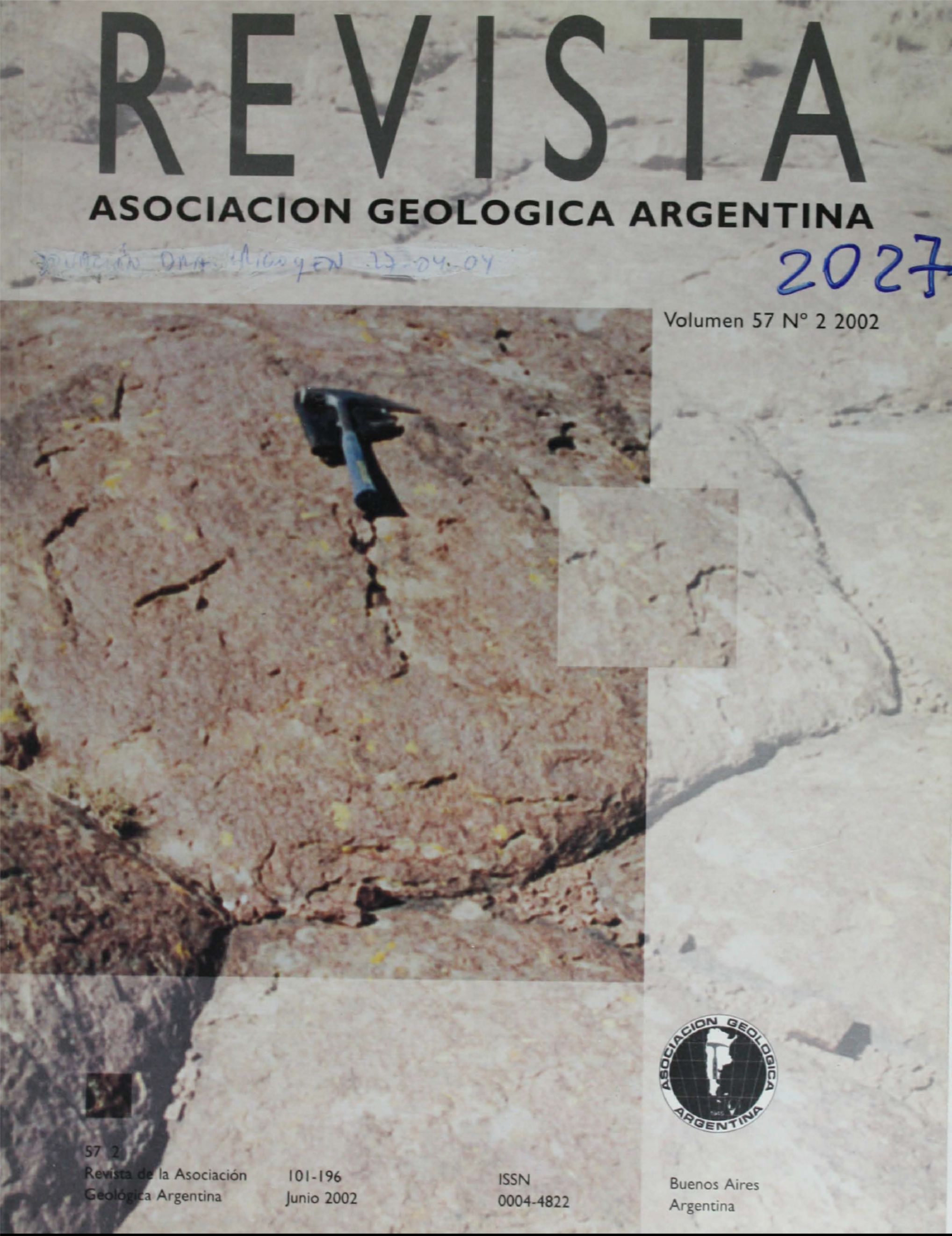Upper Oligocene - Lower Miocene volcanism in the mountain range of Pirurayo, northern Puna: stratigraphy and eruptive mechanisms
Main Article Content
Abstract
The Pirurayo Volcanic Complex (PVC) crops out in the Pirurayo Range, approximately between 65º54' - 65º50' W, and 22º25' - 22º17' S, in the northern Puna region. The complex belongs to the Moreta Formation, a continental sedimentary sequence integrated by red and purple sandstones and conglomerates. The PVC occupies the middle section of the Moreta Formation, reaching a thickness of 640 m in the north, whereas to the south it diminishes abruptly. The PVC represents a composite volcanic system of andesitic to dacitic composition, erupted during Upper Oligocene - Lower Miocene times within a fluvial continental basin controlled by a north-south trending fault system. Pure explosive events, which produced a low volume of pyroclastic surge deposits and subordinate ignimbrites, characterized the early volcanic history of the Complex. After that, eruptive mechanisms changed to the eruption of lava flows, domes and their subsequent collapses, producing an association of lavas, block- and ash-flows, and scarce and thin ash-fall deposits. The source area of the PVC deposits was likely located in the northern or northwestern sectors, but there is not enough evidence to determine whether they came from a single or multiple eruptive vents.
Article Details

This work is licensed under a Creative Commons Attribution-NonCommercial 4.0 International License.
Nota de copyright
Los autores conservan los derechos de autor y garantizan a la revista el derecho de ser la primera publicación del trabajo licenciado según una licencia de atribución Creative Commons que permite a otros compartir el trabajo con el reconocimiento de la autoría y de la publicación en la que se publicó por primera vez.
Declaración de privacidad
Los nombres y direcciones de correo electrónico introducidos en esta revista se usarán exclusivamente para los fines declarados por esta revista y no estarán disponibles para ningún otro propósito u otra persona.

